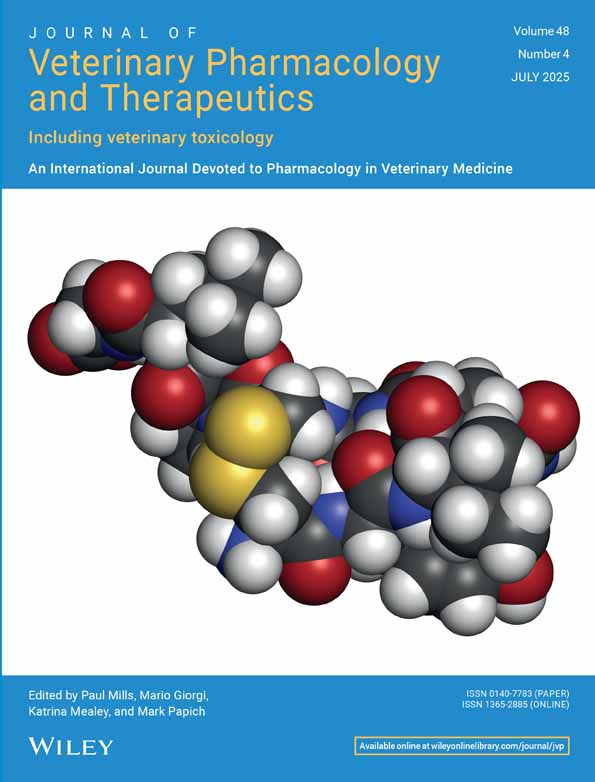Lack of local anaesthetic efficacy of Sarapin® in the abaxial sesamoid block model
Abstract
Sarapin® is a distillate of the pitcher plant that has long been used in human and veterinary medicine for‘regional analgesia’. The mechanism of the reported analgesic response is unknown; however, the agent is purported to provide more effective analgesia for slow, chronic pain than for sharp, acute pain. Reportedly, Sarapin® is also widely used as an analgesic agent in the horse, generally in combination with corticosteroids and other agents. To determine its local anaesthetic efficacy in the horse, we tested Sarapin® in a unilateral abaxial sesamoid block model at two dose levels, 2 mL and 10 mL per site, respectively. Cutaneous pain was induced with a light/heat lamp, and analgesia was assessed by measuring the hoof-withdrawal reflex latency period. Neither dose of Sarapin® altered hoof-withdrawal reflex latency in this experimental model tested over a two-week period. Based on the demonstrated efficacy of this local anaesthetic model, it seems clear that Sarapin® has no significant classical local anaesthetic actions in the horse, and probably not in other species either.




